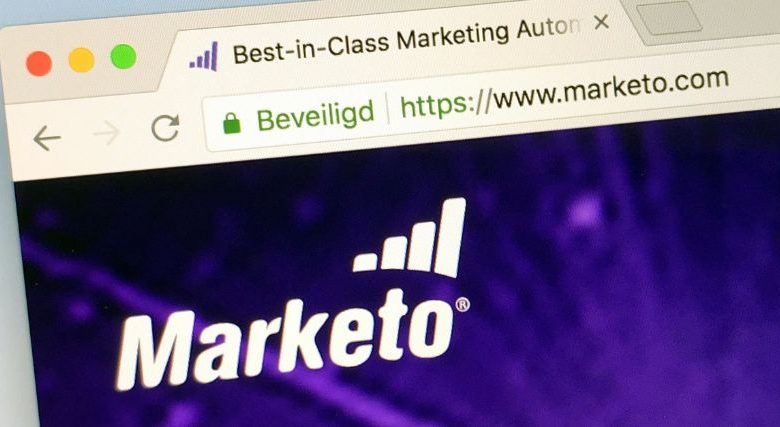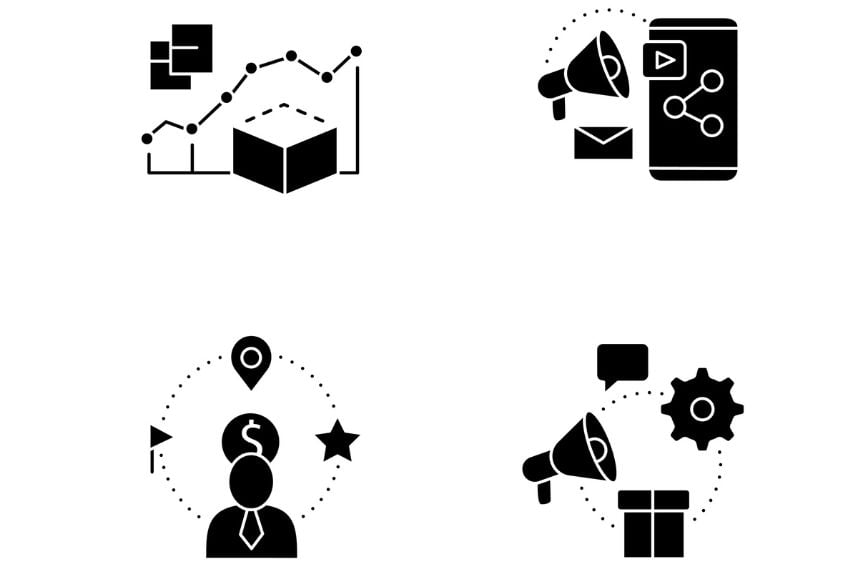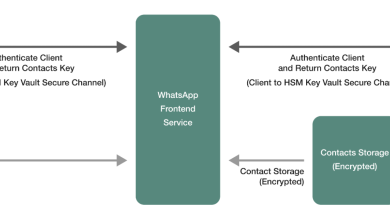The Power of Predictive Content: What It Is And How Tools Like Marketo Serve the Most Appropriate Content Using AI

Predictive content is taking the world by storm, driven by a growing demand in the marketing landscape for artificial intelligence, automation, and innovation. In today’s content landscape, if you’re “up to date,” this usually means you’re already falling behind.
The rapidly changing world of marketing and evolving customer preferences means you need to start thinking one step ahead of your customers if you want to see real results. Solutions like the predictive content tools from Marketo can help with this. They leverage the latest AI technology to automatically identify and deliver the best assets to the right consumers throughout the buyer journey.
With predictive content, innovators in the marketing world can transform omnichannel advertising strategies across email, social media, and beyond with truly personalized content experiences. Here’s everything you need to know about the evolution of predictive content.
What is Predictive Content?
Predictive content is an AI-powered approach to content marketing that allows companies to predict what customers might be interested in and deliver the right assets to them automatically. It’s essentially the next generation of content personalization, enhanced by artificial intelligence.
Predictive technology is everywhere in today’s AI-driven world. In fact, the global market for predictive analytics is expected to reach a value of $67.86 billion by 2032. For some time now, marketers have used predictive technologies to define new content programs, unlock lead-generation opportunities, and increase conversions.
Predictive content simply takes the benefits of predictive analytics to the next level. Knowing the difference between generative AI and machine learning and using them allow companies to rapidly define the best content and messages for different customer personas and serve them automatically.
This differs from previous rules-based personalization strategies in content marketing. With rules-based personalization, businesses need to create specific rules themselves for content production and distribution based on in-depth analytics. With predictive content, brands can leverage machine learning technology to recognize patterns in behavior. Then, they can leverage generative AI to automatically craft messages designed to increase conversion rates.
The Evolution of Predictive Content in Marketing

For centuries, content marketing has been a crucial tactic for virtually every type of business. Companies use content delivered via email, social media, and various other channels to raise brand awareness, engage customers, and drive sales.
Unfortunately, in recent years, achieving the best results from content marketing has become increasingly difficult. Studies show that about 328.77 million terabytes of data are created every day, and consumers are overwhelmed by endless blog posts, social campaigns, and paid ads.
At the same time, search engine algorithms are changing, making it harder than ever for businesses to reach their intended customers, no matter how much content they produce. In today’s world of content, a generic email, social campaign, or blog strategy isn’t as effective as it once was.
Consumers are searching for highly personalized, engaging, and interactive content that’s tailored to their specific needs and interests. But creating this content at scale isn’t possible with human talent alone. There are too many customer segments to cater to, and their preferences change too rapidly for marketers to manage. That’s where predictive content comes in.
Predictive content combines human expertise and creativity with the benefits of AI to give marketers an edge in their content strategy. It ensures you can always deliver the most relevant experiences to your users at the right times and on the correct channels.
The Benefits of Predictive Content

Predictive content leverages data mining and modeling, machine learning, statistics, artificial intelligence, and more to give marketing teams a competitive edge. It basically means you can predict what your customers want in advance and guide them through every stage of the purchasing journey with personalized experiences.
That’s crucial in today’s world. McKinsey reports show that 71% of customers expect personalization, and 76% are frustrated when they don’t get it. Predictive content is the key to giving your customers the experiences they want while optimizing your marketing spending.
The benefits include:
1. Higher Engagement Rates
Engagement is crucial to a winning marketing plan. However, when consumers are overwhelmed by competing messages, earning engagement can be challenging. Predictive content solutions, like the Marketo predictive content system, make it easier to drive higher levels of engagement.
These tools use predictive analytics and AI to create comprehensive “Engagement maps,” which help you understand when, where, and how you should be targeting your customers. They ensure you can visualize and plan campaigns that drive higher levels of interaction across every channel, whether you’re investing in email, social media, interactive webinars, or blog content.
2. Improved Differentiation
One of the major benefits of predictive content is that it allows companies to optimize and personalize every asset a customer encounters through their purchasing journey. 4 out of 5 marketers say they see a positive ROI when they use personalization in their campaigns. Part of the reason for this is that a unique, tailored marketing strategy differentiates you from the competition.
The insights you gain from the AI tools in your predictive content solution mean you can go beyond the generic campaigns of your competitors. You can leverage insights to create campaigns that are specifically tuned to your target audience and their interests.
3. Accelerated Buyer Journeys
Today’s world is moving a lot faster than it did ten years ago. Consumers are bombarded by endless generic advertising, making it harder for them to make intelligent purchasing decisions. Predictive content can help with this. Tools like Marketo Predictive Content allow you to automatically identify the right content for customers at different stages in their buyer journey and serve it to them instantly.
You can use this technology to deliver recommendations to customers in real time based on their specific purchasing and browsing histories, preferences, and pain points. This paves the way for accelerated business growth and more conversions.
4. Better Marketing ROI
The competition in the current digital market means customer acquisition costs are growing for most companies. This means businesses are taking extra measures to optimize and reduce their marketing budget. Unfortunately, without the right insights, it can be difficult to know where to spend your marketing dollars. Predictive content tools give you the power to optimize your marketing budget.
They can recommend content based on specific performance metrics like conversions and clicks, ensuring you’re building the right campaigns for your strategy. Plus, since these tools allow you to build highly personalized experiences, the conversion opportunities are greater. Companies can generate up to 40% more revenue just by investing in personalization.
5. Greater Loyalty and Retention
Predictive content doesn’t just make it easier to capture the attention of your target audience. It also ensures you can more effectively engage and retain crucial customers. This is essential when you consider it costs up to 7 times more to acquire a new customer than it does to retain one.
With predictive content, you can continue to nurture customers after they convert, sending upsell offers and recommendations to your clients when they matter most. This boosts your chances of greater customer lifetime value. Plus, it can help you create more satisfied, loyal customers ready to promote your brand for you through reviews and word-of-mouth referrals.
Marketo Predictive Content: The Basics
As demand for predictive content has grown, the solutions available for creating predictive experiences have increased. One of the most popular offerings comes from Adobe Marketo Engage, the comprehensive platform for intelligent lead generation and marketing.
Adobe Marketo Engage is a world-leading marketing automation platform packed with features for account-based marketing, multi-touch attribution, lead management, and more. It’s also home to Marketo Predictive Content, a comprehensive toolkit for delivering high-performance content experience to customers across channels.
Predictive Content is a cross-channel marketing solution with features for social media, email, webinars, mobile, and other forms of digital advertising. It even includes access to Adobe Dynamic Chat for predictive chat-based recommendations. Features include:
- Engagement maps and omnichannel engagement tools
- Social, email, webinar, mobile, and digital advertising capabilities
- Adobe Dynamic Chat
- Sales insights and account profiling
- Target account management
- Predictive audiences
- Lead generation, segmentation, and targeting
- Content and web personalization
- Marketing analytics and journey insights
How Marketo Predictive Content Works

Marketo Predictive Content, powered by Adobe Sensei AI, is an add-on product for the Marketo Engage toolkit. It combines the following four distinctive capabilities:
Content Discovery and Tagging
With Marketo Predictive Content, users can automatically discover and tag all of their assets, preparing them for AI-powered recommendations and measurement. You can also allow for content to be auto-discovered when customers click on a specific webpage and quickly identify content that’s suitable for “predictive” strategies based on popular web journeys.
Predictive Content Recommendations
Adobe Marketo allows businesses to embed rich media assets into their website, containing custom headers, images, descriptions, and CTAs. These assets display AI-powered recommendations with a bar placement overlay for every web visitor. This means you can automatically deliver recommendations based on buyer behaviors and preferences. Plus, you can use the same recommendation engine in your email marketing campaigns.
Audience Targeting
The audience targeting features in Marketo Predictive Content are ideal for lead and account-based marketing strategies. With the toolkit, companies can recommend highly personalized content to individuals and groups using Marketo Engage’s segmentation engine.
You can use the solution to create highly personalized email and web experiences based on whether you have data about a visitor or if they’re new to your business. This makes it easier for every user to highlight the most relevant content.
Content Goals and Performance
With Marketo Predictive Content, companies can adjust the algorithm of Adobe Sensei AI to suit their specific needs. You can tailor your strategy based on metrics like clicks and conversions and get high-level performance summaries every step of the way. The system provides insights into active predictive content assets, views, direct leads, conversion rates, channel performance, and more.
With these insights, business leaders can make intelligent decisions on future campaigns, discovering which content works best for returning and new visitors.
How to Get Started with Predictive Content in Marketo
Predictive Content is a component within the Adobe Marketo Engage platform. If you already have the correct subscription, you should see the “Predictive Content App” tile on your “My Marketo” page. It should be located under “Content Analytics”.

Once you click on the “Predictive Content” tab, you’ll find the following features on your Predictive Content dashboard:
- Predictive content summary: An overview of your current predictive content assets featuring tables, graphs, and statistics.
- Top bar: A current count of content and views and the quantity of “activated” pieces you’re using over a 7 or 30-day period.
- Performance Table: An overview of your top 10 discovered content pieces, their views, direct leads, and conversion rates.
- Predictive engagement: Insights into your conversion rates that combine clicks with direct leads and contrast the performance of different sources.
- Content trend by views: A comparison view of how your content matches with your predictive content.
Creating Predictive Content
To create predictive content assets for your campaign, you’ll need to identify your assets within Marketo and define which pieces should be “approved” for predictive content.
When you add a piece of predictive content to your list, you’ll be able to edit its functionality within the “Predictive Content” dashboard. You can adjust different components for different types of media. For instance:
- Email: Titles, URLs, button labels, and categories.
- Rich media: Titles, URLs, image URLs, descriptions, and categories
- Bar: Titles and URLs
Once you’ve chosen a piece of predictive content, you can use the “Content Actions” menu to determine what the content should do, such as serving rich media to your customers. After you activate your predictive content, you’ll be able to insert it into your website and email campaigns using a JavaScript code generated by the Marketo software.
Rich Media
If you’re using rich media, you can simply click on the “Rich Media” option in the editor and tick the box to ensure it’s “enabled for Predictive Content.” From there, click on the drop-down menu for Content Actions and select “Enable for Web-Rich Media.” You can find more guidance here.
Here are the basic steps involved:
- Click on the Predictive Content page and select a title
- Choose “Rich Media”
- Write a description
- Click the “Categories” box to select or edit categories
- Click the box to enable Predictive Content
- Click Save
Emails
With emails, you can make certain images and content components “predictive,” customizing the experience for every recipient. To do this, select “Marketing Activities” and select the email you want to edit. Click on “Edit draft” and click on the gear icon to Enable “ContentAI” – the older name for Predictive Content.
Click on the categories drop-down menu, and select the images or components you want to make predictive. You can then preview the email before saving your message.
Recommendation Bar
The content recommendation engine offered by Marketo uses machine learning algorithms and predictive analytics to deliver tailored content to each web visitor. The engine uses historical data to determine the best-performing content for each visitor. To create and use the bar, head to your Content Settings page and select “Bar.”
You can activate the recommendation bar for a URL and choose colors, styles, and formatting rules for the bar to match your website’s branding. Keep in mind that the Recommendation engine does need you to have at least one piece of content set to “on” within the Recommendations page.
Analyzing and Managing Predictive Content

Once you’ve created your predictive content, you can manage and analyze everything within the Marketo backend. To analyze the performance of your content, click on the “Analytics” section on the summary page. You can filter your top content and insights by:
- Number of views
- Trending content
- Suggested content
- Conversion rate
The dashboard also allows you to manage all of your created “Predictive Content,” adjusting images, titles, source enablement, and categories in one place. You can also filter through content using the “filter” icon to find specific types of content, such as rich media or specific insights.
Case Study: TechConnect and Marketo Predictive Content
The best way to understand what predictive content can do for your marketing strategy is to look at an example. TechConnect, one of the world’s leading software companies, has an excellent reputation for delivering powerful products. However, in the past, they struggled to deliver custom and personalized marketing materials to their audience.
The company’s broad range of software solutions catered to various industries and sectors, meaning they had a hard time providing every potential customer with the right content. After analyzing the situation, TechConnect decided to use Marketo Predictive Content to create a more personalized marketing strategy.
They wanted to transform the customer journey, boost customer engagement, and increase conversions. At the same time, they were looking for a way to reduce the complexity of their previous marketing strategy, which involved manually segmenting audiences for campaigns. The marketing team started tagging existing content assets in Marketo based on product, buyer stage, and industry.
The Marketo Predictive Content tool then analyzed visitor behavior, including visited pages and emails opened, alongside demographic details from an integrated CRM. Using AI, the system predicted which content was most relevant to each visitor and how to deliver it across channels.
The results of the Predictive Content campaign were:
- Increased engagement: Email click-through rates increased by 30%, while website bounce rates were reduced by 20%.
- Improved conversions: Personalized content allowed TechConnect to increase its conversion rates by a massive 15%.
- Faster sales cycle: Potential buyers found the solutions they needed faster, resulting in a sales cycle reduced by 25%.
- Efficiency: Automating the delivery of personalized content meant the marketing team saved hours on manual segmentation and content generation.
Embracing the Future of Predictive Content

Content marketing is still crucial in today’s world, but it’s becoming increasingly difficult for business leaders to connect with, engage, and convert their audience in a crowded marketplace. Consumer expectations are evolving, and buyers are demanding more personalized, relevant experiences.
Delivering on these expectations requires companies to go above and beyond with their content strategies, implementing unique methods to ensure they’re delivering the right assets to their customers at the right times and on the correct channels.
Doing all of this manually would be a time-consuming and expensive process. However, with predictive content solutions like Marketo Predictive Content, it’s easier than ever. With these resources, business leaders can tap into the advantage of AI-fueled marketing to increase conversions and engagement, improve customer retention, and save crucial marketing dollars.
If you need extra help unlocking the potential of predictive content or setting up your Marketo Engage platform, reach out to Toptal today. Our Marketo experts and consultants can give you a competitive edge as you enter the new world of predictive content.
FAQs
What is predictive content targeting?
Predictive content targeting is a process that automatically identifies personalization opportunities across a range of marketing channels. It helps you drive the best results for your business by ensuring you can target customers effectively on all of your marketing channels.
What is predictive in marketing?
Predictive marketing is the art of taking existing and relevant data about your customers and their buyer behaviors, as well as previous campaign performance, to make smarter campaign decisions. It ensures you can make data-driven decisions for the future of your marketing campaigns.
What is predictive analytics for content?
Predictive analytics in the content marketing landscape help guide the content creation process by suggesting the right marketing assets for future campaigns based on historical data. Analytical tools use AI and machine learning to determine which marketing assets will drive conversions.
Why is predictive marketing important?
Predictive marketing empowers brands to move beyond generic messaging and focus on delivering customer-centric experiences. It ensures companies can access insights into customer behavior, stay ahead of future trends, and increase engagement, conversion, and retention rates.
Does Marketo use AI?
Marketo Engage uses artificial intelligence, machine learning, and intelligent algorithms in its predictive content solution. This allows companies to deliver personalized content to each consumer on multiple channels throughout their purchasing journey.



